Amphioctopus marginatus
(Taki, 1964)
Coconut octopus
These relatively small octopi
are common at muck sites and are often observed during night dives. The common
name comes from their habit of using a couple of coconut shell halves as a mobile
refuge they can carry with them in barren sandy areas. None of our numerous
photos below show them with the coconut shells, but they often substitute a
variety of other items to hide out in, including otherwise empty mollusk shells
and discarded jars, bottles, cups and other debris. The octopi can also bury
themselves in the sand very quickly. The first four photos show Amphioctopus
marginatus in harp shells.
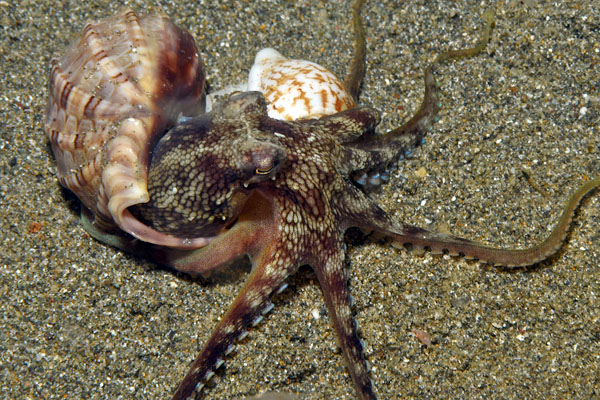
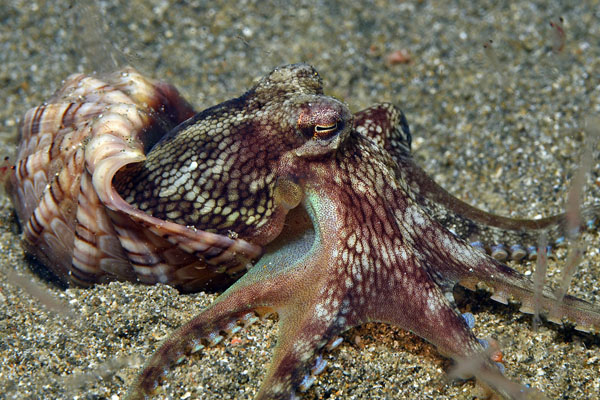
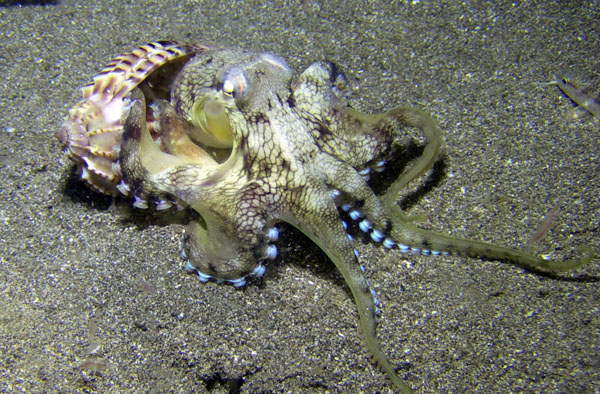
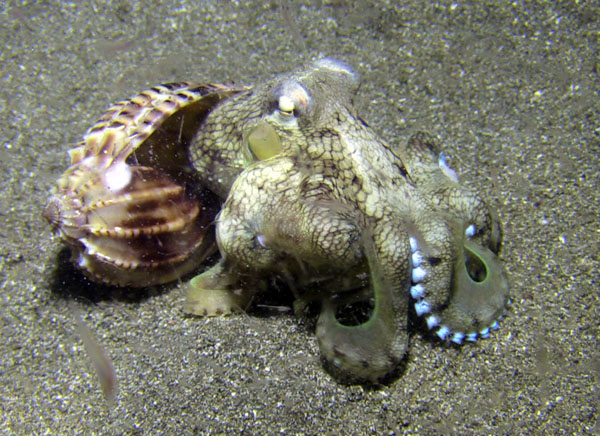
A small octopus in a medium-sized
tun shell.

In
a spiny murex shell.
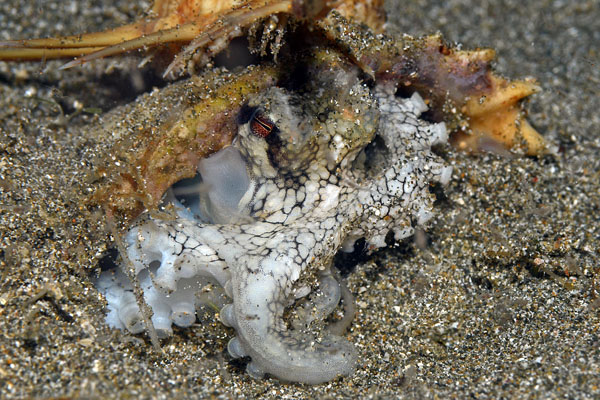
In a moon snail shell.
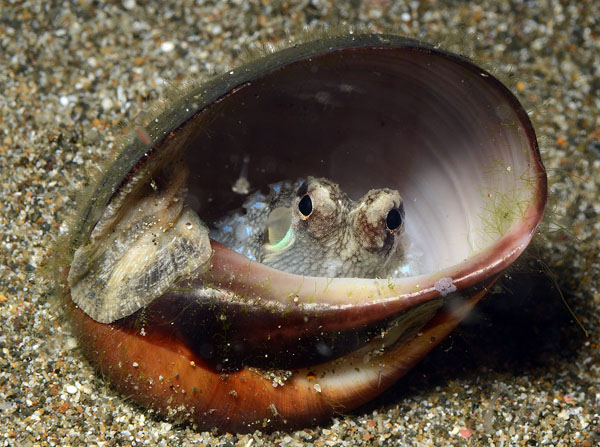
In the shell of the stromb Laevistrombus
canarium.
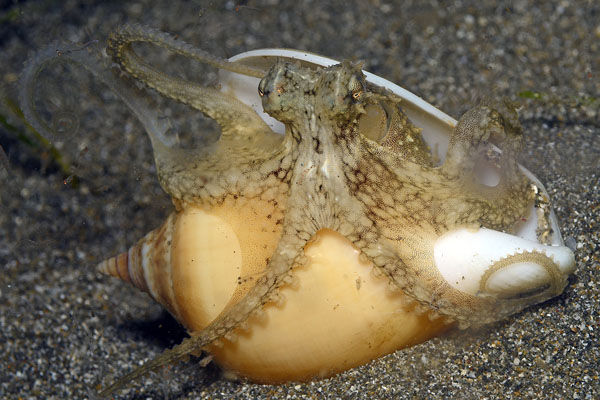
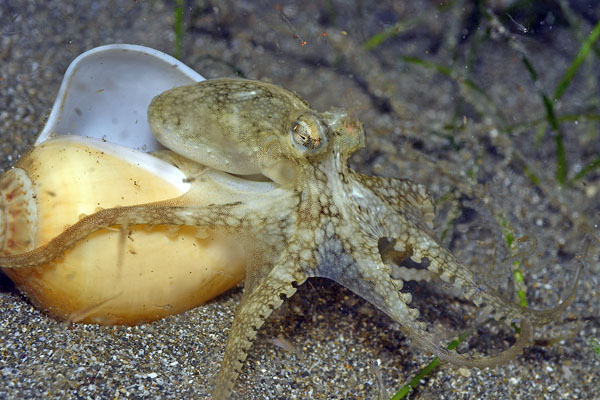
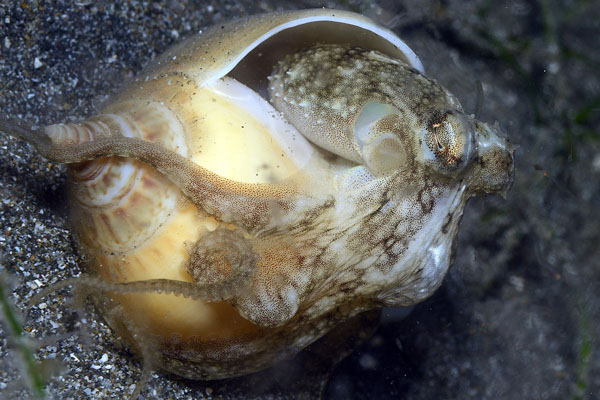
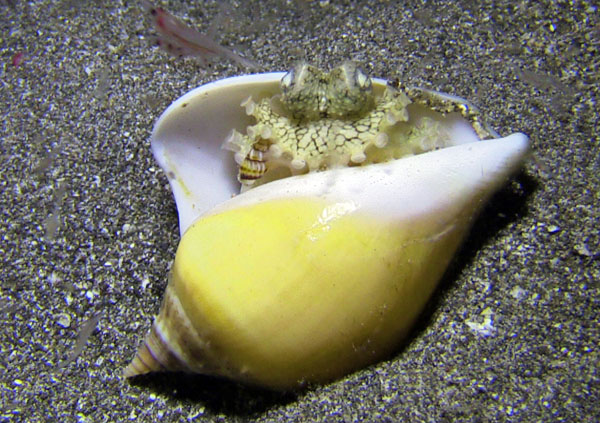
Using clam shells.
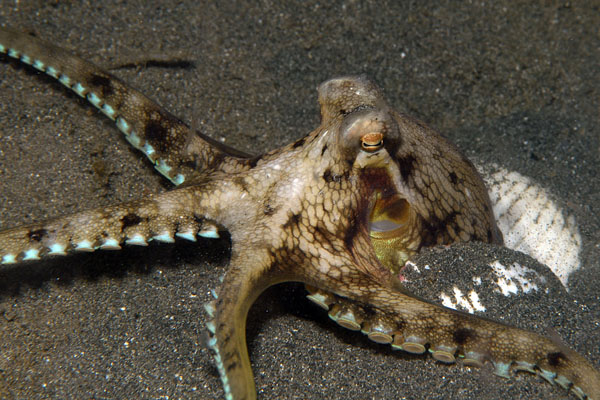
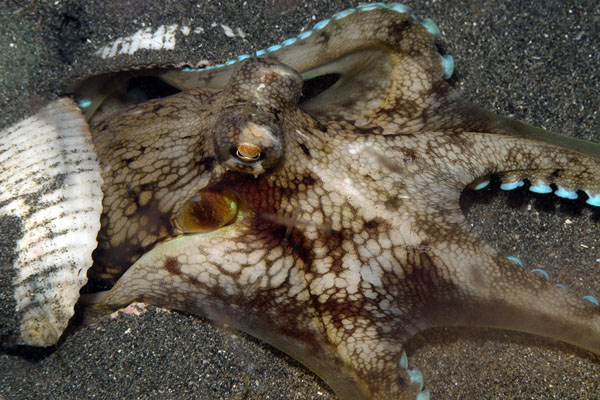
Clams with an olive shell.
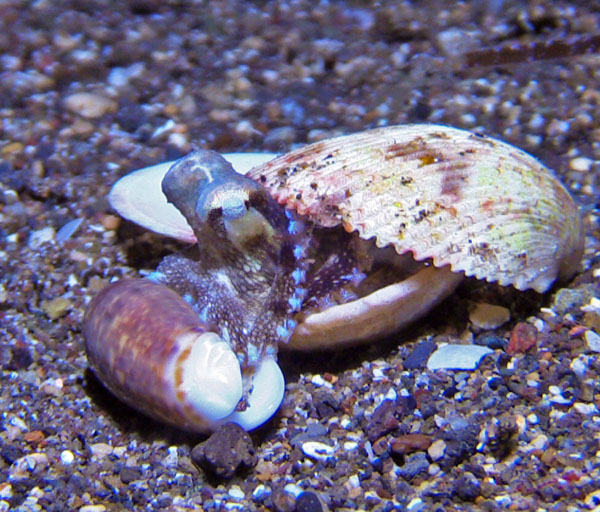
This one has a couple of clam shells nearly buried in sand.
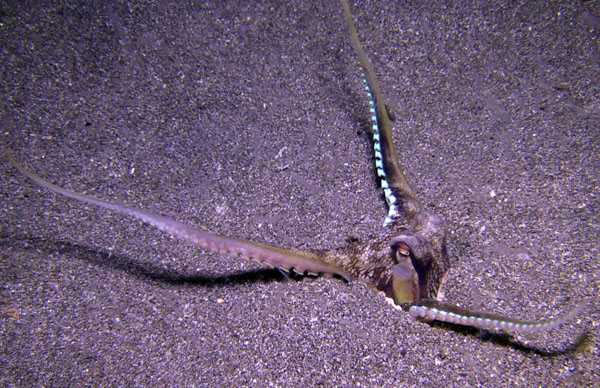
Living in a discarded rusty can with a couple of clam shells to use as trap
doors when he retreats into his can.
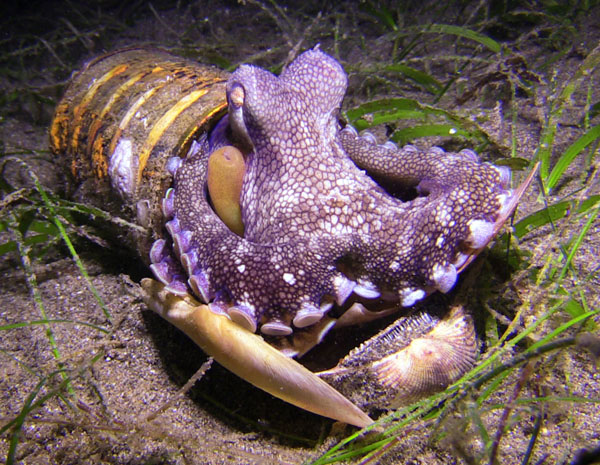
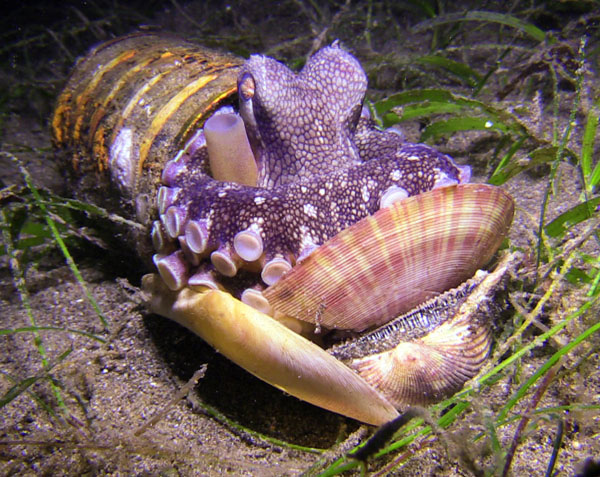
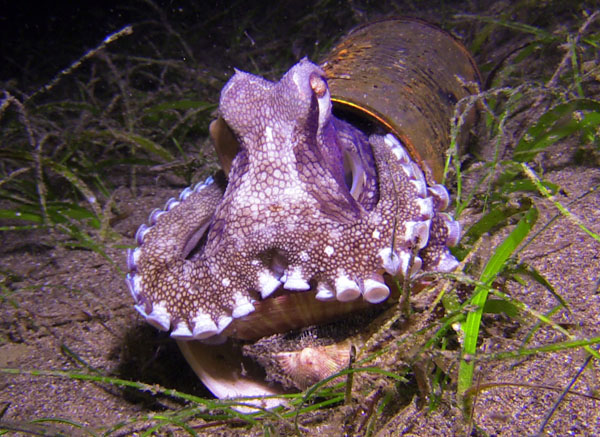
Another one with a can, this time using a nice fig shell as his trap door.
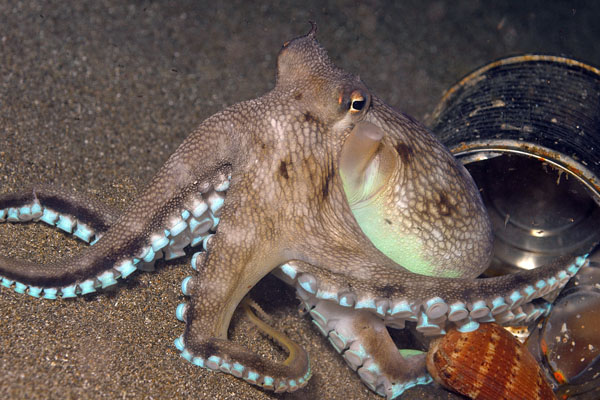
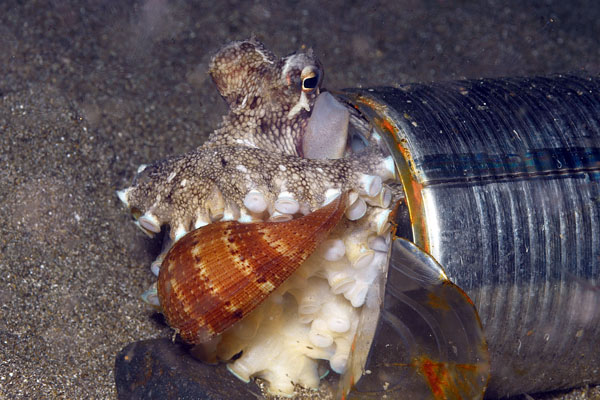
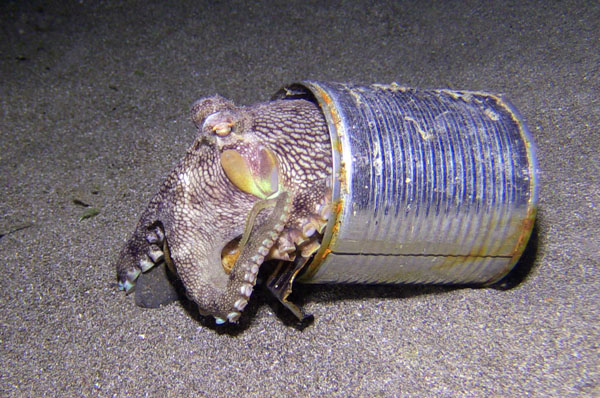
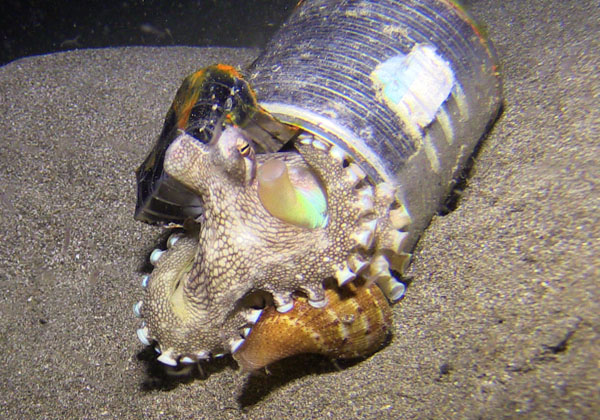
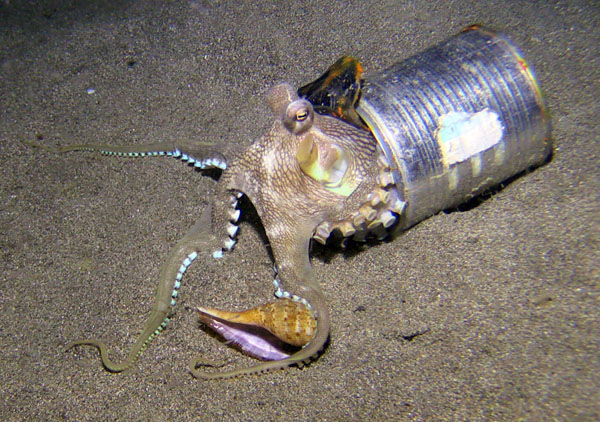
If he doesn't like the neighborhood, he can just pick up his can and run away.
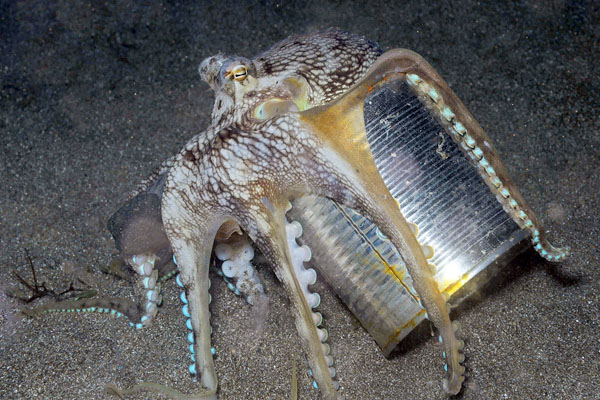
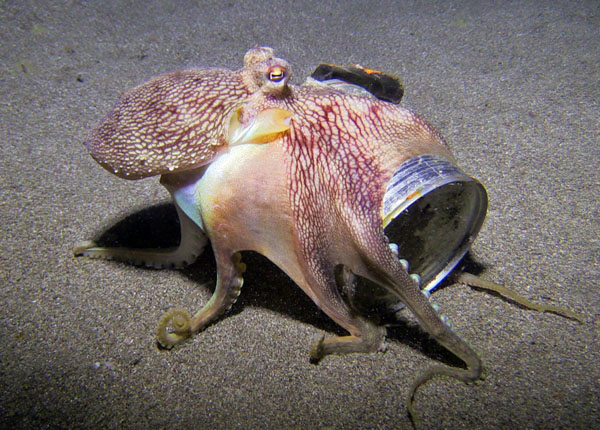
With an old plastic cup.
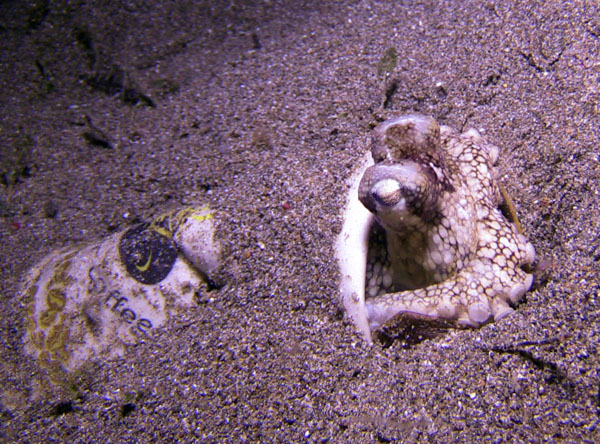
A broken coffee cup can also act as a suitable abode.
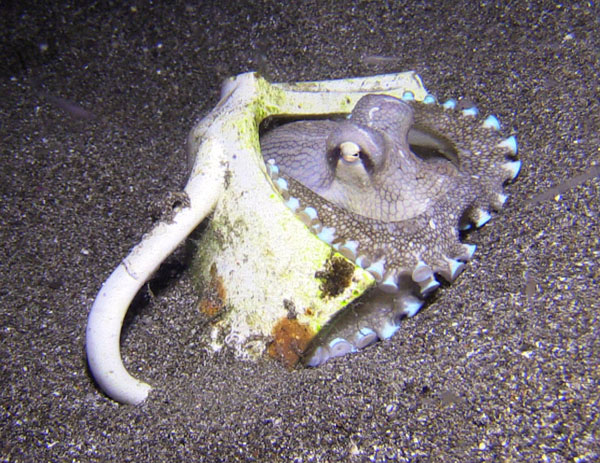
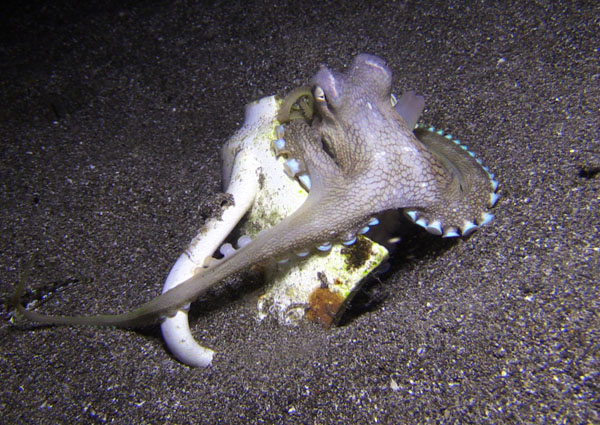
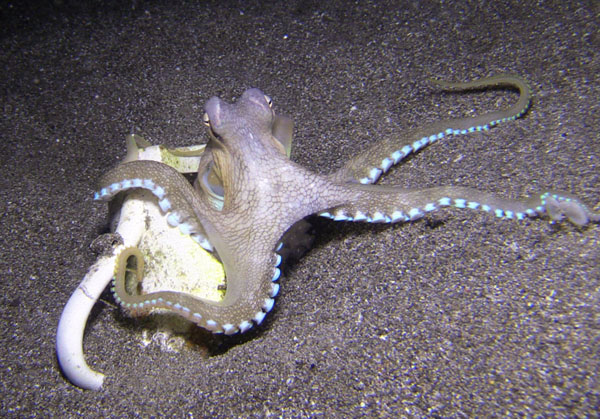
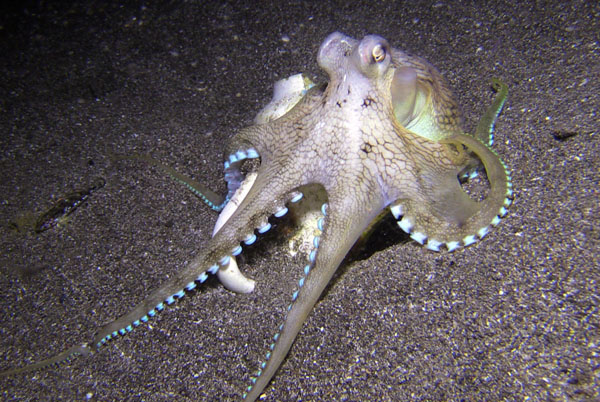
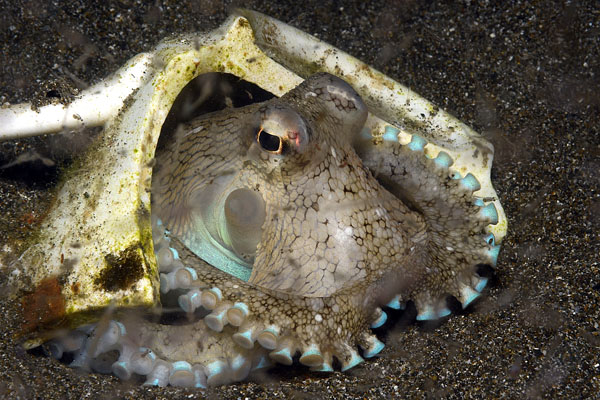
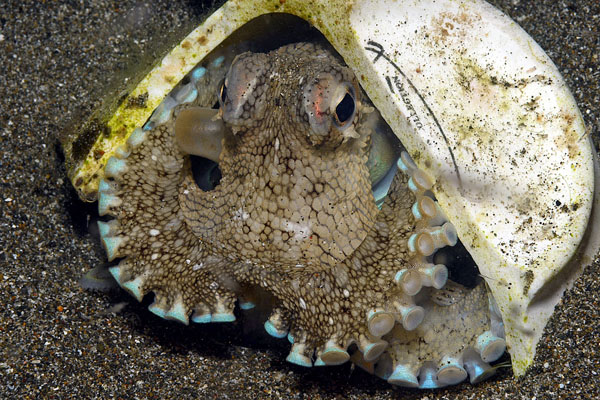
Or even a broken bottle.
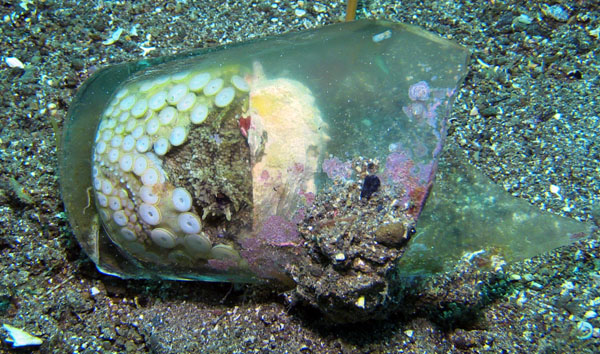
A glass jar does not conceal but it still can protect.
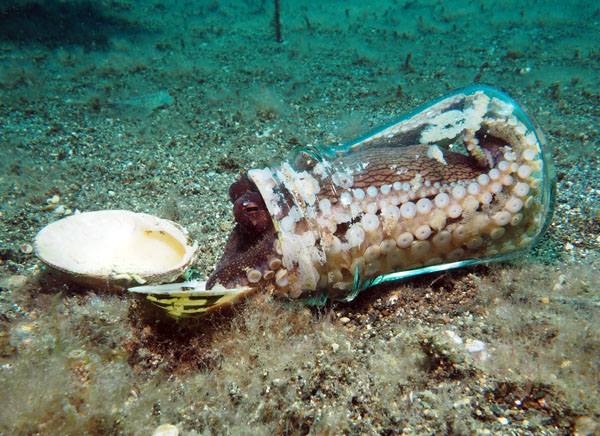
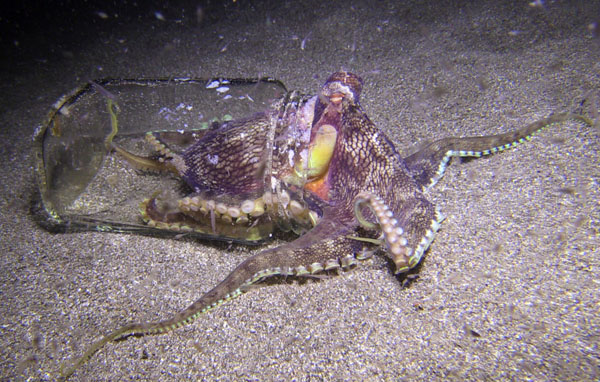
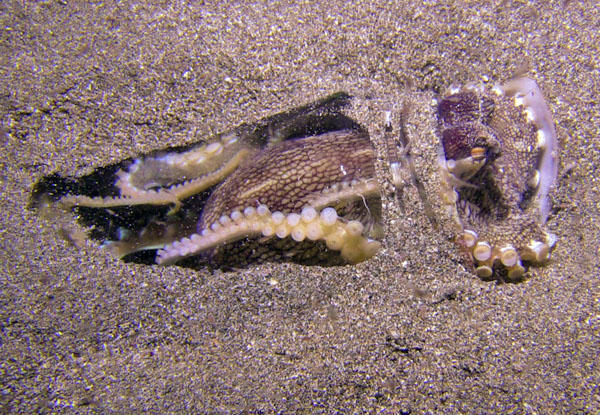
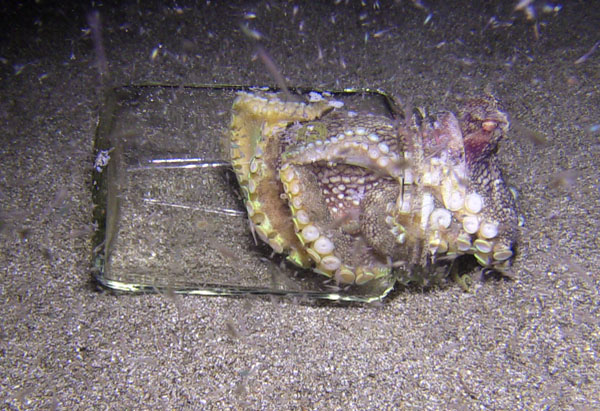
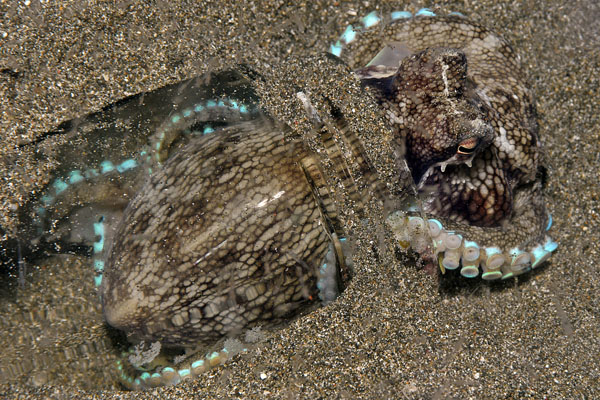
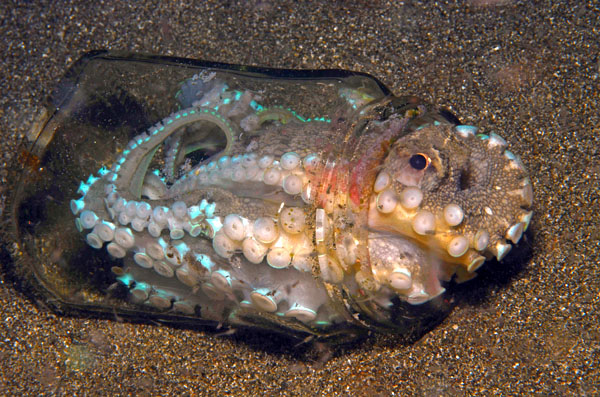
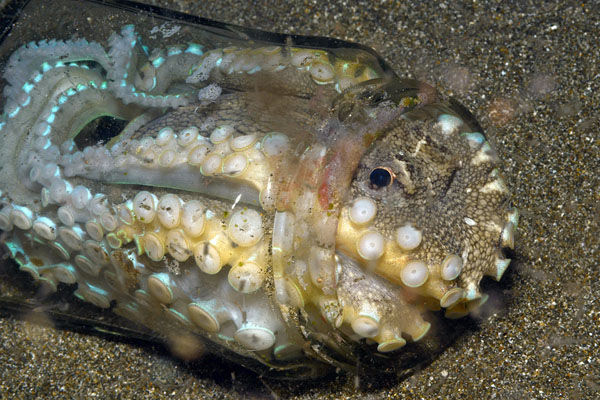
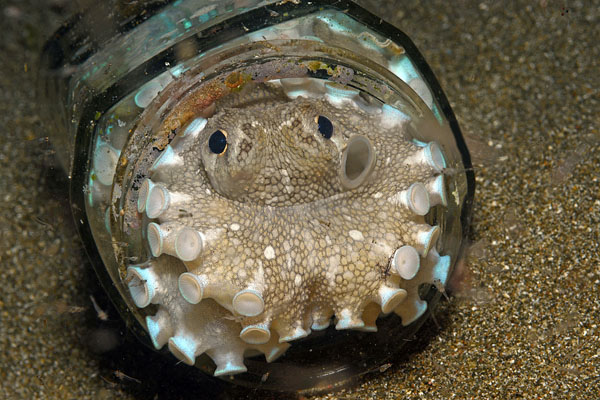

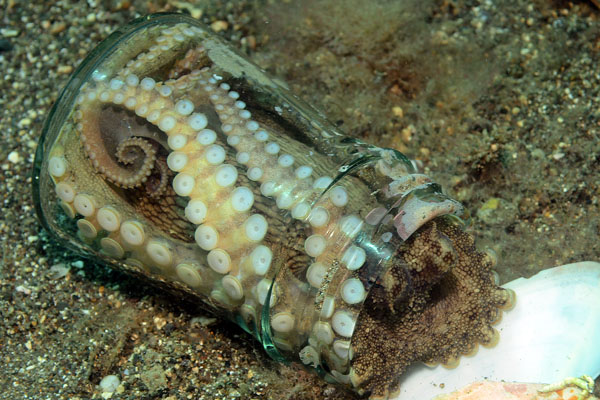
Probiotics.
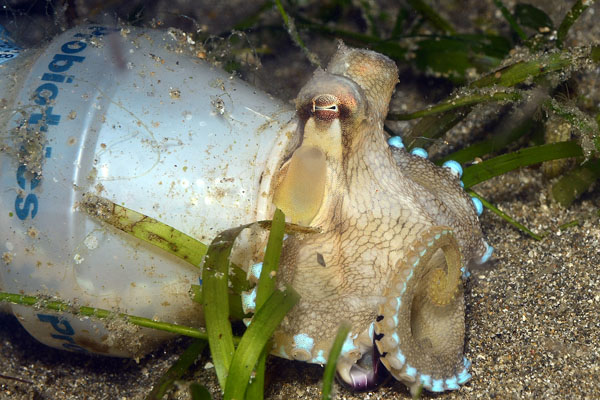
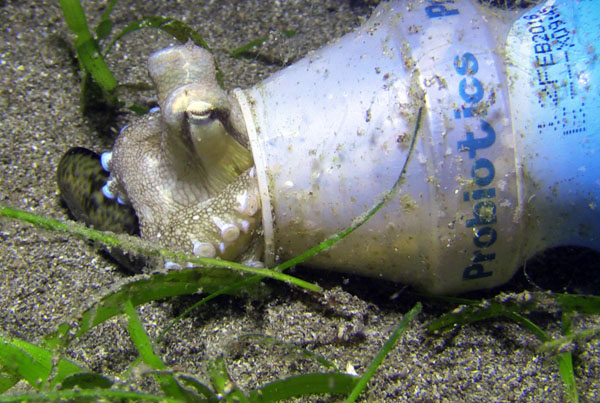
Some just hide in holes, rocks in the sand, or among debris.
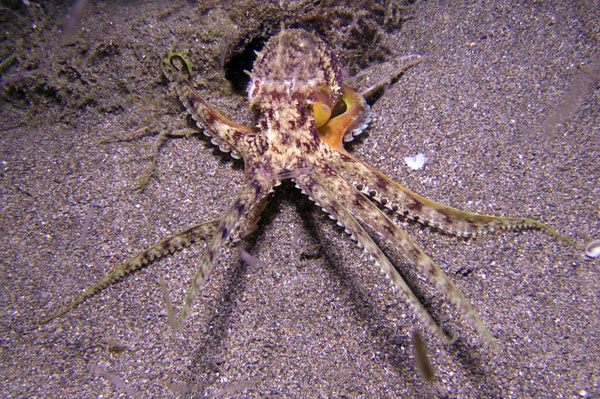
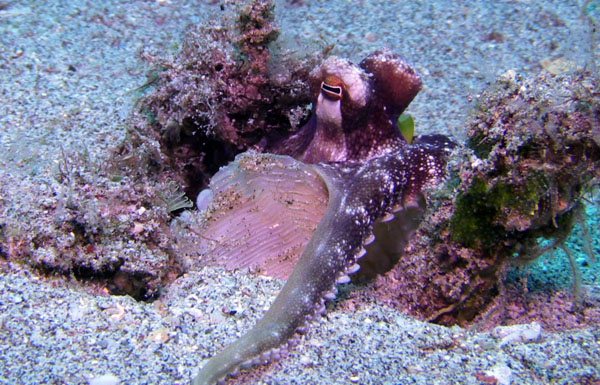
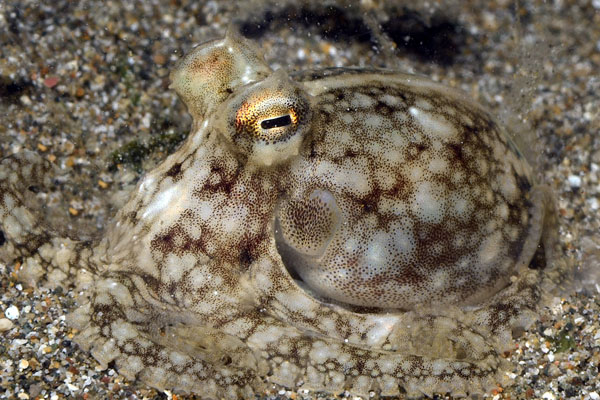
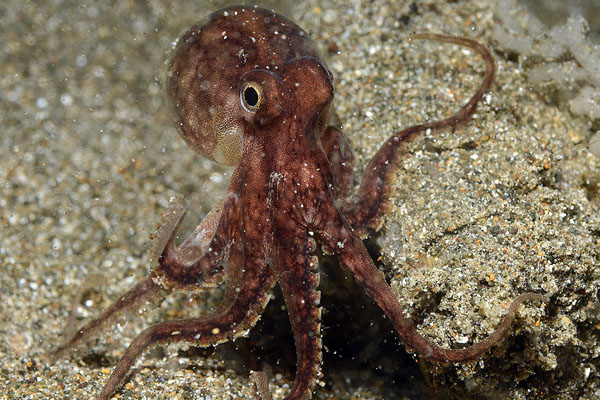

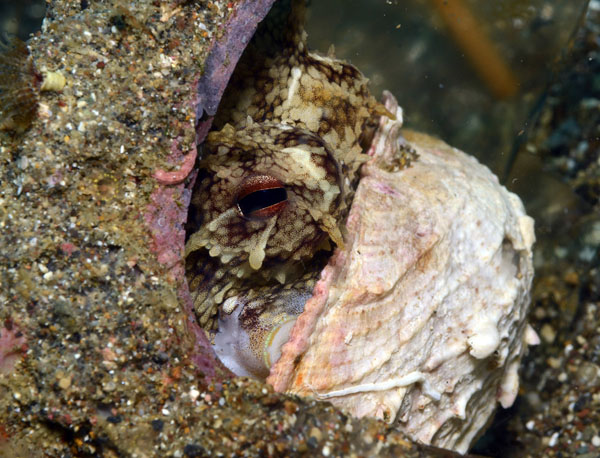

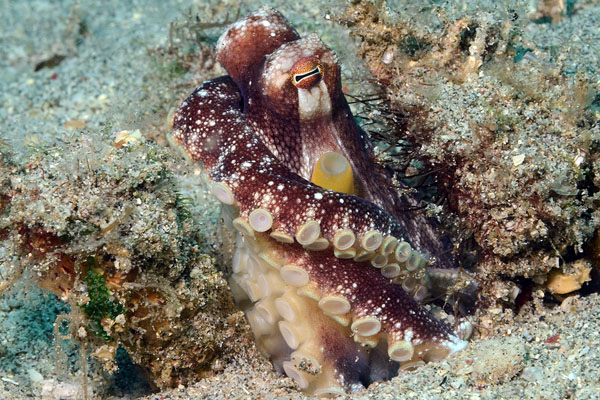
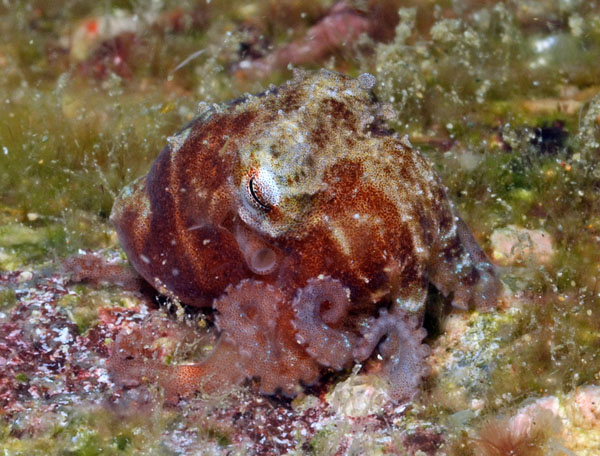
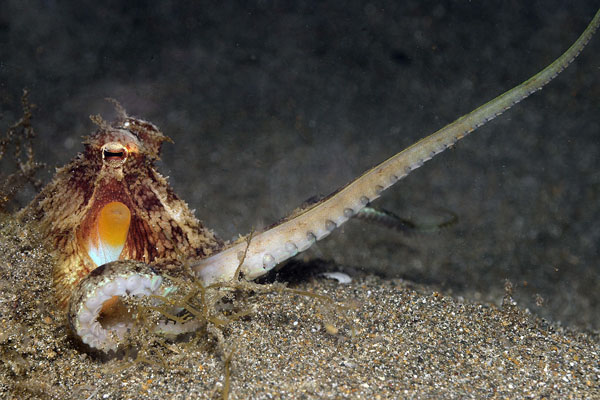
Created
22 March 2025
Updated 18 June 2025
Return
to Anilao cephalopods
Kwajalein Underwater home























































